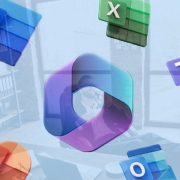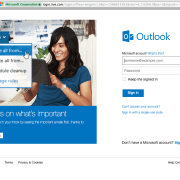Microsoft 365 Copilot: Comprehensive Guide to AI-Powered Business Productivity
Published: March 17, 2023 | Last updated: October 2025
Key Takeaway: Microsoft 365 Copilot has evolved from an experimental AI assistant into a comprehensive productivity platform that transforms how businesses handle document creation, data analysis, and workflow automation. Understanding its current capabilities, pricing structure, and implementation requirements helps organizations make informed decisions about AI integration.
Generative AI capabilities have fundamentally transformed business productivity software, with Microsoft leading the charge through its comprehensive Copilot integration across the Microsoft 365 ecosystem. What began as an experimental feature has matured into a robust platform that enhances how organizations approach business productivity and collaboration, offering sophisticated assistance across Word, Excel, PowerPoint, Outlook, Teams, and specialized business applications.
Microsoft Copilot combines large language models with organizational data through the Microsoft Graph, creating contextual AI assistance that understands your business environment. Unlike generic AI tools, Copilot accesses your calendars, emails, documents, meetings, and collaborative workspaces to provide relevant, actionable insights tailored to your workflow and organizational context.
Table of Contents
- 1 Current Microsoft Copilot Ecosystem
- 2 Business Chat and Cross-Application Intelligence
- 3 Power Platform AI Integration
- 4 Implementation Considerations and Requirements
- 5 Current Limitations and Realistic Expectations
- 6 Strategic Implementation Framework
- 7 Future Outlook and Competitive Landscape
- 8 Frequently Asked Questions
- 8.0.1 How does Microsoft Copilot pricing work for businesses?
- 8.0.2 What data does Copilot access, and how is privacy protected?
- 8.0.3 Can Copilot replace human workers in business processes?
- 8.0.4 What are the technical requirements for implementing Copilot?
- 8.0.5 How accurate is Copilot for business-critical tasks?
- 8.0.6 What training is required for employees to use Copilot effectively?
Current Microsoft Copilot Ecosystem
Microsoft has expanded Copilot far beyond its initial Word and Excel integration, creating a comprehensive AI ecosystem that spans multiple product lines and use cases.
Core Microsoft 365 Applications
Word Copilot
Transforms document creation through intelligent drafting, content suggestions, and formatting assistance. Copilot analyzes your writing style and organizational templates to maintain consistency across documents while suggesting improvements for clarity and impact.
Excel Copilot
Revolutionizes data analysis by generating formulas, creating visualizations, and identifying spreadsheet trends. Users can request complex calculations using natural language, with Copilot translating requests into appropriate Excel functions and explaining the logic.
PowerPoint Copilot
Streamlines presentation development by generating slide layouts, suggesting content structure, and creating visual elements based on document context or meeting notes. The system can transform lengthy reports into concise presentation formats while maintaining key messaging.
Outlook Copilot
Enhances email management through intelligent drafting, tone adjustment, and priority sorting. Copilot can summarize lengthy email threads, suggest responses based on context, and analyze calendar availability to help manage meeting scheduling conflicts.
Teams Copilot
Transforms meeting productivity by generating real-time summaries, tracking action items, and providing catch-up assistance for participants who join late. Post-meeting, Copilot creates comprehensive summaries with assigned tasks and follow-up recommendations.
Extended Business Applications
Microsoft has integrated Copilot capabilities across its broader business application portfolio, extending AI assistance beyond core productivity tools.
| Application | Primary Function | Key Capabilities |
|---|---|---|
| Dynamics 365 Sales | Customer Relationship Management | Lead scoring, email drafting, and opportunity analysis |
| Viva Sales | Sales Productivity | CRM data integration, meeting preparation, follow-up automation |
| Dynamics 365 Customer Service | Support Operations | Case summarization, solution suggestions, escalation routing |
| Power Platform | Low-Code Development | App generation, workflow automation, formula creation |
Business Chat and Cross-Application Intelligence
Business Chat represents Microsoft's most ambitious Copilot feature. It functions as a centralized AI assistant that can access and synthesize information across your entire Microsoft 365 environment.
Unified Information Access
Business Chat operates as an organizational knowledge hub, capable of simultaneously searching and synthesizing information from multiple sources. When you ask Business Chat to prepare a project status report, it can pull data from project documents, recent email exchanges, meeting transcripts, and calendar entries to create comprehensive summaries that would typically require hours of manual compilation.
Practical Business Chat Applications
Project Management: “Summarize the status of the Q4 marketing campaign, including budget utilization, timeline progress, and outstanding issues from this week's meetings.”
Client Preparation: “Create a briefing document for tomorrow's client meeting with Acme Corp, including recent communication history, project deliverables, and any outstanding concerns.”
Team Coordination: “What are the main blockers affecting our development team this month, and what solutions have been discussed in recent standup meetings?”
Strategic Analysis: “Analyze our sales performance data from the past quarter and identify trends that should influence our Q1 strategy.”
Workflow Integration Capabilities
The system excels at connecting disparate information sources to provide contextual insights. For example, when preparing for a client presentation, Business Chat can analyze recent email exchanges to understand client concerns, review project documentation to identify key achievements, and examine calendar data to understand meeting frequency and engagement levels.
This cross-application intelligence becomes particularly valuable for managers and executives who must maintain awareness of multiple projects, team dynamics, and organizational priorities without manually reviewing dozens of documents and communication threads.
Power Platform AI Integration
Microsoft's integration of Copilot into the Power Platform represents a significant advancement in low-code and no-code development capabilities, making sophisticated application development accessible to business users without extensive technical backgrounds.
Accelerated Application Development
Power Apps Copilot can generate functional business applications based on natural language descriptions. Users can describe their workflow requirements, data relationships, and user interface preferences, and Copilot will translate these specifications into working applications complete with data models, user interfaces, and basic business logic.
Power Automate Intelligence
Copilot in Power Automate creates sophisticated workflows by understanding business process descriptions. Users can describe approval processes, data synchronization requirements, or notification systems, with Copilot generating the appropriate connectors, conditions, and actions to implement these workflows.
Power BI Analytics Enhancement
Power BI Copilot assists with data visualization and analysis by suggesting appropriate chart types, identifying relevant data relationships, and generating insights from complex datasets. The system can create dashboard layouts optimized for specific business roles and decision-making requirements.
This democratization of application development enables organizations to address specific workflow challenges without waiting for IT resources or external development teams, significantly accelerating digital transformation initiatives.
Implementation Considerations and Requirements
Successfully deploying Microsoft Copilot requires careful planning around licensing, security, data governance, and user adoption strategies.
Licensing and Pricing Structure
Microsoft Copilot operates on a per-user subscription model with different tiers based on functionality requirements. Organizations typically need to maintain existing Microsoft 365 Business Premium or Enterprise licenses while adding Copilot subscriptions for users who require AI assistance capabilities.
The pricing structure reflects the computational resources required for AI processing, with costs varying based on usage patterns and feature access levels. Organizations should budget for both the direct subscription costs and potential increases in Microsoft 365 storage and processing requirements as AI features generate additional data and metadata.
Security and Compliance Framework
Data Privacy Considerations
Copilot processes organizational data to provide contextual assistance, requiring careful evaluation of data handling practices, retention policies, and access controls. Organizations in regulated industries should review compliance implications before implementation.
Microsoft has implemented several security measures for Copilot, including data residency controls, transit and rest encryption, and integration with existing Microsoft 365 security policies. However, organizations must establish governance frameworks for AI-generated content, particularly regarding accuracy verification and approval processes for external communications.
The system respects existing Microsoft 365 permissions and access controls, ensuring that Copilot cannot access information that users wouldn't usually have permission to view. This security model maintains organizational data boundaries while enabling AI assistance within appropriate contexts.
Change Management and User Adoption
Successful Copilot implementation requires comprehensive change management strategies addressing technical integration and user behavior modification. Organizations deploying modern Windows 11 devices often find smoother Copilot adoption due to optimized hardware performance and integrated AI acceleration capabilities.
- Develop role-specific training programs that demonstrate relevant Copilot applications for different job functions.
- Establish clear guidelines for AI-generated content review and approval processes.
- Create feedback mechanisms to identify high-value use cases and areas for improvement.
- Implement gradual rollout strategies starting with power users and early adopters.
- Monitor usage patterns and provide ongoing support for feature discovery and optimization.
Current Limitations and Realistic Expectations
While Microsoft Copilot offers significant productivity enhancements, organizations should maintain realistic expectations about its current capabilities and limitations.
Accuracy and Reliability Considerations
Copilot's responses require human review and verification, particularly for critical business communications, financial analysis, and strategic decision-making. The system can generate plausible but incorrect information, especially when working with incomplete data or complex analytical requirements.
Organizations should establish verification protocols for AI-generated content, especially for external communications, regulatory submissions, and financial reporting. While Copilot excels at drafting and initial analysis, human oversight remains essential for accuracy and appropriateness.
Performance and Availability
Processing Speed: Complex requests involving multiple data sources or large documents may require several seconds to minutes for completion, depending on system load and request complexity.
Feature Availability: Due to data residency requirements, some Copilot capabilities may be limited during peak usage periods or may not be available in all geographical regions.
Integration Dependencies: Full functionality requires robust internet connectivity and may be affected by Microsoft 365 service availability or performance issues.
Learning Curve and Adoption Challenges
Maximizing Copilot's value requires users to develop new skills in prompt engineering and AI interaction. Effective use involves learning to phrase requests clearly, understanding when AI assistance is most valuable, and creating workflows incorporating human expertise and AI capabilities.
Organizations often find that initial productivity gains are modest while users adapt to new workflows, with more significant benefits emerging after several months of consistent use and optimization.
Strategic Implementation Framework
Organizations achieving the most success with Microsoft Copilot follow structured implementation approaches addressing technical and organizational requirements.
Phase 1: Assessment and Planning (4-6 weeks)
Evaluate current Microsoft 365 usage patterns, identify high-value use cases, and establish success metrics. Conduct pilot user selection and develop governance frameworks for AI-generated content.
Phase 2: Pilot Deployment (8-12 weeks)
Deploy Copilot to a limited user group representing different business functions. Gather feedback, refine training materials, and document best practices for broader organizational adoption.
Phase 3: Gradual Rollout (12-16 weeks)
Expand access based on pilot results, providing targeted training and support. Monitor usage patterns and adjust licensing allocation based on actual utilization and value generation.
Phase 4: Optimization and Scaling (Ongoing)
Continuously evaluate new Copilot features, optimize workflows, and expand use cases based on organizational learning and Microsoft platform updates.
Success Metrics and ROI Measurement
Organizations should establish clear metrics for evaluating Copilot's impact on productivity, quality, and business outcomes. Practical measurement approaches include tracking time savings for specific tasks, monitoring content quality improvements, and assessing user satisfaction with AI-assisted workflows.
Quantitative metrics might include reduced time for document creation, increased meeting productivity through better preparation and follow-up, and improved data analysis turnaround times. Qualitative assessments should evaluate user confidence in AI-generated content and overall workflow satisfaction.
Future Outlook and Competitive Landscape
Microsoft continues expanding Copilot capabilities through regular feature updates and new application integrations. The platform's development roadmap includes enhanced multilingual support, improved industry-specific functionality, and deeper integration with third-party business applications through the Microsoft ecosystem.
The competitive landscape for AI-powered productivity tools continues evolving, with Google, Amazon, and specialized vendors developing alternative solutions. However, Microsoft's advantage lies in its comprehensive integration across the existing Microsoft 365 ecosystem, reducing implementation complexity for organizations already committed to Microsoft's productivity platform.
Organizations should expect continued rapid development in AI capabilities, with new features and improvements released regularly. This dynamic environment requires ongoing evaluation and adaptation of implementation strategies to maximize value from evolving AI capabilities.
Frequently Asked Questions
How does Microsoft Copilot pricing work for businesses?
Microsoft Copilot requires existing Microsoft 365 Business Premium or Enterprise licenses plus additional per-user Copilot subscriptions. Pricing varies by region and commitment level, with volume discounts available for larger organizations. The cost structure reflects the computational resources required for AI processing and includes access to all integrated Copilot features across the Microsoft 365 suite.
What data does Copilot access, and how is privacy protected?
Copilot accesses data within your Microsoft 365 environment based on existing user permissions, including emails, documents, calendar entries, and Teams conversations. Microsoft maintains that organizational data is not used to train the underlying AI models, and data processing occurs within your organization's compliance boundary. However, organizations should review their specific privacy and compliance requirements before implementation.
Can Copilot replace human workers in business processes?
Copilot is designed as an augmentation tool rather than a replacement for human workers. While it significantly enhances productivity for tasks like document drafting, data analysis, and meeting preparation, human oversight remains essential for accuracy verification, strategic decision-making, and complex problem-solving. Most organizations find that Copilot enables employees to focus on higher-value activities rather than eliminating positions.
What are the technical requirements for implementing Copilot?
Copilot requires current Microsoft 365 subscriptions, modern web browsers or updated Office applications, and reliable internet connectivity. Organizations should ensure their Microsoft 365 environment is properly configured with appropriate security policies and user permissions. For full functionality, some features may require specific licensing tiers or additional Microsoft services.
How accurate is Copilot for business-critical tasks?
Copilot's accuracy varies significantly based on task complexity, data quality, and context clarity. Accuracy is generally high for routine tasks like email drafting and basic analysis. However, complex analytical work, strategic recommendations, and specialized industry content require careful human review. Organizations should establish verification protocols for AI-generated content, particularly for external communications and decision-making processes.
What training is required for employees to use Copilot effectively?
Effective Copilot adoption requires training in prompt engineering, understanding AI capabilities and limitations, and developing new workflows that integrate AI assistance. Most organizations benefit from role-specific training programs demonstrating relevant applications for different job functions. Ongoing support and best practice sharing help users discover advanced features and optimize their AI-assisted workflows over time.
Microsoft 365 Copilot represents a significant evolution in business productivity tools, offering substantial benefits for organizations willing to invest in proper implementation and change management. While the technology matures, early adopters find meaningful productivity improvements and workflow enhancements that justify investing in AI-powered business tools.
Success with Copilot requires realistic expectations, comprehensive planning, and ongoing optimization as technology and organizational capabilities continue to develop. Copilot integration offers compelling advantages for businesses committed to the Microsoft ecosystem in the evolving landscape of AI-enhanced business productivity.











Leave a Reply
Want to join the discussion?Feel free to contribute!